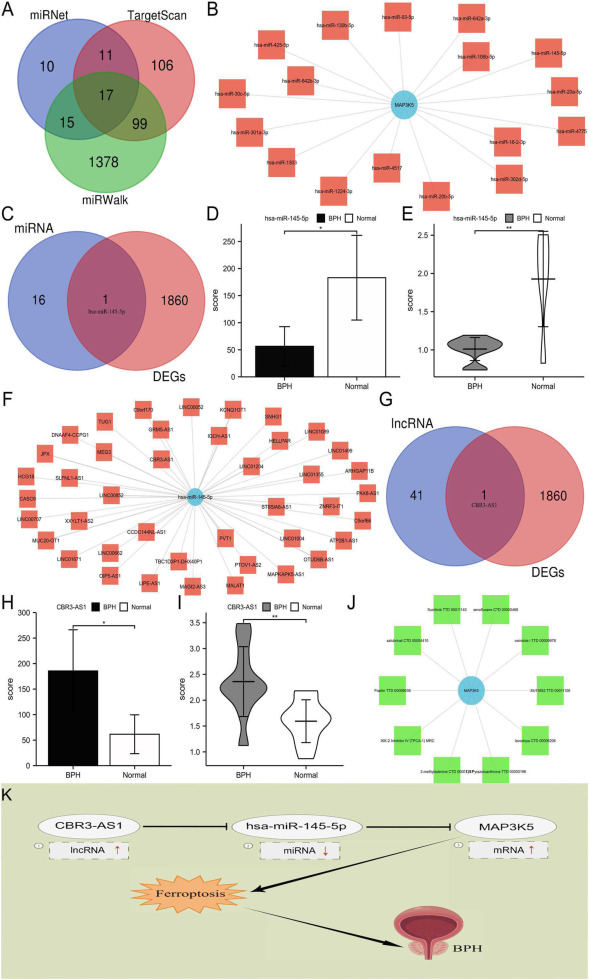
Multi-omics analysis to identify CBR3-AS1-hsa-miR-145-5p-MAP3K5 pathway as a ferroptosis-related ceRNA network in benign prostatic hyperplasia


In aging males, benign prostatic hyperplasia (BPH) is a chronic pathological process that primarily causes lower urinary tract symptoms. According to histopathology, BPH is caused by an imbalance between cell death and proliferation.1 However, the exact pathophysiology remains unclear. Ferroptosis is a newly discovered form of programmed cell death. The cell morphology is characterized primarily by the reduction or disappearance of mitochondrial cristae and mitochondrial shrinkage.2,3 Competing endogenous RNAs (ceRNAs) are important regulators of many biological processes and have been involved in various diseases.4
